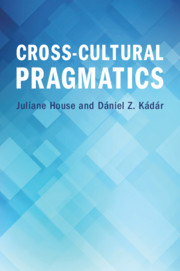Book contents
- Cross-Cultural Pragmatics
- Cross-Cultural Pragmatics
- Copyright page
- Contents
- Figures and Illustrations and Tables
- About the Authors
- Acknowledgements
- 1 Introduction
- Part I The Basics
- 2 Background
- 3 How Is Pragmatic Contrasting Possible?
- 4 The Nature of Cross-Cultural Pragmatic Data and Their Analysis
- 5 Politeness
- Part II Framework
- Part III Applying the Framework
- Notes
- Glossary
- References
- Index
5 - Politeness
from Part I - The Basics
Published online by Cambridge University Press: 17 September 2021
- Cross-Cultural Pragmatics
- Cross-Cultural Pragmatics
- Copyright page
- Contents
- Figures and Illustrations and Tables
- About the Authors
- Acknowledgements
- 1 Introduction
- Part I The Basics
- 2 Background
- 3 How Is Pragmatic Contrasting Possible?
- 4 The Nature of Cross-Cultural Pragmatic Data and Their Analysis
- 5 Politeness
- Part II Framework
- Part III Applying the Framework
- Notes
- Glossary
- References
- Index
Summary
Chapter 5 examines a key phenomenon in the field of cross-cultural pragmatics, namely, linguistic politeness and impoliteness. While politeness popularly describes ‘proper’ behaviour, as a technical term it encompasses all kinds of behaviour by means of which language users express that they take others’ feelings into account. Similarly, impoliteness not only refers to rude language but rather it covers all types of behaviour that are felt to cause offence. Politeness and impoliteness have been the most researched phenomena in the field, and in chapter 5 we provide a summary of those politeness- and impoliteness-related phenomena which are particularly relevant for cross-cultural pragmatic inquiries.
Keywords
- Type
- Chapter
- Information
- Cross-Cultural Pragmatics , pp. 57 - 68Publisher: Cambridge University PressPrint publication year: 2021

